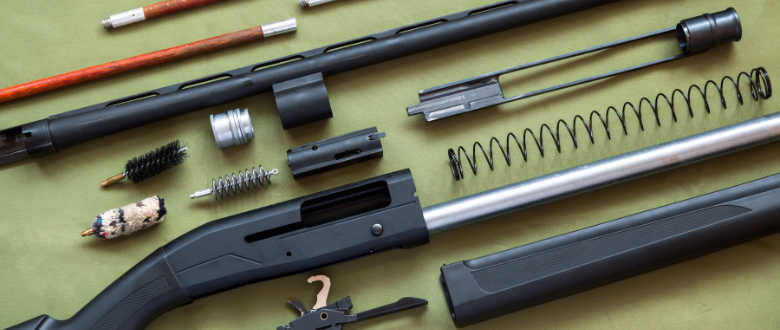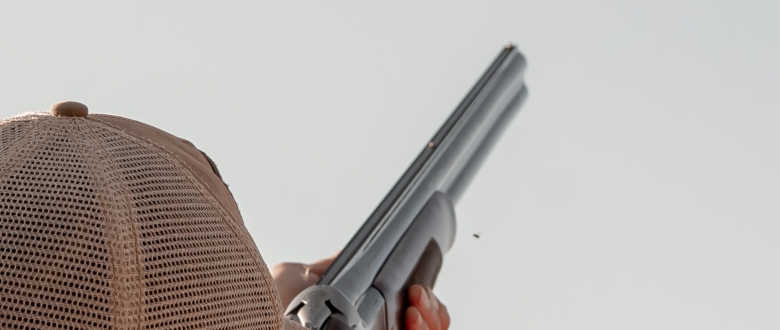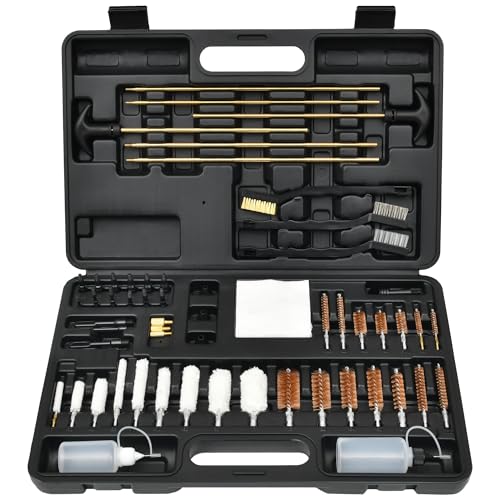↬ Maintaining a shotgun with regular cleanings is the key to keeping it functioning reliably at the highest level.

Proper gun care and maintenance is centered around keeping rust from developing on exposed metal parts. The development of rust on external metal surfaces is ruthless with uncoated shotguns, especially those used in saltwater environments.
Thoroughly cleaning your choke and shotgun after each hunt is good practice, but often uncleaned firearms using modern ammunition are better left dirty for short periods of time as the grime can create a thin protective layer to prevent rust formation.
In this ultimate guide, we’ll discuss the proper methods for gun and choke tube cleaning, the cleaning tools you need to complete the job effectively, and how to set up a maintenance schedule to prevent rust from damaging a shotgun.
![]()
Choke Tube Maintenance
Fixed choke tubes require little maintenance other than routine inspection to make sure there aren’t any dents, gouges, or bulges that would affect its performance. Fixed chokes are part of the barrel itself, which is more susceptible to damage from being slammed into objects or being used as a rest when not in use.
Choke tubes that are a part of interchangeable choke systems should be inspected regularly with focus given to the threads which secure it to the barrel. These threads can become corroded if water sits for too long which results in a stuck choke tube. Place a few drops of choke tube lube on the threads of the choke and do not overtighten.
![]() Choke Tube Cleaning Tips
Choke Tube Cleaning Tips
- Inspect the choke tube regularly
- Lightly oil the choke threads
- Remove choke if submerged in water and let dry
- Avoid neglecting a choke for long periods of time
- Inspect choke threads for rust or corrosion
For more on how to clean a choke tube, read this guide.


General Shotgun Maintenance and Cleaning
Shotguns and choke tubes can be cleaned relatively quickly and easily with just a few tools. The basic equipment needed for gun care are 3/0 steel wool for rust removal, cotton cleaning patches in various sizes, a stiff jointed cleaning rod with a swivel tip for each gauge type, solvent such as Hoppes #9 or acetone, an oil wiping rag, gun grease, and paste wax.
![]()
![]()
![]()
![]()
![]()
- Bore Brush
- Solvent (Hoppes #9)
- Cleaning Patches
- Barrel Rod
- Lubricating Oil
- Choke grease
Cleaning a Shotgun Barrel
Thin-walled shotgun barrels should be examined regularly for dents or bulges. If irregularities are observed, the gun should be taken to a gunsmith who has the correct tools to either raise dents or smooth out bulges. If a fixed gauge shotgun has a bulge in the choke, it is usually easier to trim the barrel enough for it to be re-choked.
Occasionally the muzzle of a shotgun will become obstructed by mud, clay, or snow. After unloading the gun, the muzzle should be cleared with a rod or tool that will not damage the barrel or choke. Under no circumstances should an obstruction be shot out of a barrel.
Within a firearm, the burning of gunpowder creates pressure to force the bullet or shot out of the barrel. Shotguns tend to develop streaks of plastic wad, unburnt powder, and shot debris in the barrel after many hundreds of rounds are fired. This tends to occur just after the chamber or near the muzzle of the gun. Remove this buildup of debris in the barrel by wrapping a wad of fine steel wool around the cleaning patch of the cleaning rod and work the bore thoroughly to smooth it out.
![]()
![]()
![]()
![]()
![]()
- STEP 1 – Remove barrel from shotgun
- STEP 2 – Insert cleaning rod with metal brush attached
- STEP 3 – Vigorously move the rod up and down the barrel, twist occasionally
- STEP 4 – Place a cleaning patch soaked in solvent around the brush
- STEP 5 – Insert rod back into barrel and move up and down
- STEP 6 – Replace cleaning patch until barrel is free of debris and shiny
- STEP 7 – Remove choke tube and apply grease to threads
Related Products


Cleaning the Chamber of a Shotgun
The chamber and action can be cleaned with a bristle brush soaked with solvent. Cleaning wipes or patches can be used to absorb any excess solvent or gun powder residue. The outside of the gun can be wiped with a silicone-based cloth with a small bit of gun oil. In areas with very humid conditions, heavy gun grease is the protectant from rust development.
Oil should never be squirted at random into the action of any shotgun. Excess gun oil attracts dirt and dust that could cause problems with the gun cycling. For shotguns used at temperatures near or subzero, flush them with gasoline and then lubricate with powdered graphite.
![]()
![]()
![]()
![]()
![]()
- Remove pins in receiver to back out trigger assembly
- Remove bolt and carrier spring
- Clean internal parts with solvent and lubricate
- Use compressed air to blow debris and powder out of receiver
- Clean receiver with solvent and cotton patches
- Lubricate internal slides and re-assemble
Long Term Shotgun Cleaning and Preventative Measures
When hunting in wet weather, take the time before hand to apply paste wax and then polish it off after it dries. This will wick water away from the exposed parts under heavy rainfall. For shotguns that have been soaked or have water internally, either completely disassemble the gun or let it hang with the muzzle downward near a source of heat so that it can dry out.
Once dry, apply oil liberally to prevent rust from forming. Even one instance of not letting a gun properly dry out can cause rust and corrosion to form or even a stuck choke tube. Develop a maintenance schedule for cleaning a shotgun after each hunt or at regular intervals.
Bottom Line: Shotgun Maintenance is Key
Cleaning a shotgun should be a common occurrence to keep it functioning properly and to avoid rust from forming which could ruin the finish. The barrel and chamber are the two areas that require the most cleaning due to the amount of debris and grime they accumulate.
Choke tube threads should be oiled or greased occasionally to prevent it from becoming stuck, while the inside of the barrel should be cleaned with a wire brush and rod to prevent gun powder and plastic wad material from building up. The shotgun chamber should be disassembled and re-lubricated to operate efficiently without jamming.
A maintenance schedule should be introduced and followed to help promote routine cleanings that can improve the overall perfomance and function of the firearm. Unfortunately, the first time most hunters get serious about cleaning firearms or choke tubes is when shells won’t cycle or a choke is stuck in the barrel.
See this guide for more choke cleaning tips.
Was this helpful?
Search Chokes by Gauge
Related
- How often should you clean your firearm?
- Fixes for choke tubes that won’t sit flush
- Top reasons why your choke tube is underperforming
- How often should you replace a choke tube?
- Choke tube cleaning tips and maintenance
Latest Posts
- Best Waterfowl Choke Tubes for 2024, Expert Picks


- Choke Tube Diameter and Constriction Table


- 5 Easy Ways to Remove a Stuck Choke Tube




Choke Interchange Lookup
Find which choke tube fits your shotgun.
Last update on 2025-11-25 / Affiliate links / Product Images from Amazon Product Advertising API



